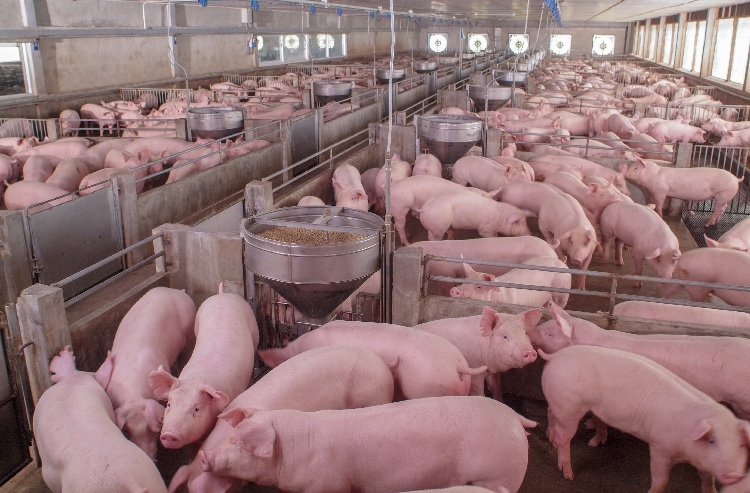Raw material import necessity squeezes feed groups
 |
| Raw material import necessity squeezes feed groups, Illustration photo |
Sarah Gilleski, acting agriculture counsellor at the US Embassy in Vietnam, last week participated in a webinar to help the country find ways to replenish feed ingredients more efficiently. The demand for feed ingredients in Vietnam is increasing, pushing the livestock industry towards more challenges.
Gilleski is interested in the application of biotech crops, an innovative tool and approach to increase crop productivity, farmers’ income, and supplement feed supply to the Vietnamese market.
Vietnam’s soybean imports from the United States dropped by over 40 per cent in June. However, according to the General Department of Vietnam Customs (GDVC), the US was still the leading soybean import market in the first six months of 2021, accounting for over 58 per cent of the total volume and 57.5 per cent of the total turnover of soybeans and soy sauce of Vietnam. Over 93 per cent of soybeans imported to the country come from the US and Brazil.
Vietnam’s industrial animal feed industry has a growth rate of 13-15 per cent per year but it is very dependent on imported raw materials, at around 85 per cent. This dependence causes the prices of domestic animal feed to rise when the world market fluctuates.
Vietnam spends $5-7 billion each year importing animal feed. In the first seven months of 2021, the value of Vietnam’s animal feed imports was more than $2.9 billion on, according to the GDVC.
The sources for raw materials of animal feed are spread out across the globe. But as with many sectors, the pandemic made it more difficult to transport raw materials and animal feed by sea, while road and air traffic almost came to a standstill.
Meanwhile, domestic animal feed prices continue to increase due to strong fluctuations in raw material prices in the world. The prices of corn, soybeans, and fishmeal have continuously increased since last October, with an average increase of up to 35 per cent, according to the Department of Livestock Production under the Ministry of Agriculture and Rural Development.
“Vietnam will need as much as 30 million tonnes of feed ingredients per year for the next five years to ensure an average growth of 11-12 per cent per year,” said Nguyen Thanh Son, a representative from the Vietnam Poultry Association. He worries that the country’s agricultural sector can only provide a maximum of around five million tonnes of corn kernels, four million tonnes of bran, and four million tonnes of cassava for animal feed production.
Son found that Vietnam exports about six million tonnes of rice per year, but lacks a strategy to develop domestic feed ingredients methodically. “Our country also lacks synchronous solutions, such as applying biotechnology for feed ingredients with high yield and output to supplement the supply of raw materials for animal feed,” he said.
Experts said that the effects of climate change have caused a decrease of produce in most countries providing animal feed, and the impacts of the pandemic have increased transportation costs and even cut off some previous supply chains.
Tran Xuan Dinh, vice chairman of the Vietnam Seed Trade Association, said that the country’s maize production area has continuously decreased while the yield of traditional hybrid maize varieties has reached a critical point.
By 2020, the maize growing area had shrunk to 943,000 hectares and the domestic corn output was only 4.76 million tonnes, while the volume of imported corn reached a good 12 million tonnes, with a turnover of $2.39 billion.
“The expansion of transgenic maize varieties, with high yield and good tolerance, is one solution to increase the production of raw materials for domestic animal feed production,” suggested Dinh.
In Vietnam, genetically-modified maize covered about 92,000ha in 2019, accounting for 10.2 per cent of the total maize area. The country has also recognised 16 genetically modified maize varieties, of which eight are being cultivated by farmers.
According to the US Grains Council, the countries that are supplying feed sources like corn and soybean are also leading countries in cultivation and production of genetically-modified crops.
What the stars mean:
★ Poor ★ ★ Promising ★★★ Good ★★★★ Very good ★★★★★ Exceptional
Related Contents
Latest News
More News
- Tungsten surges to 12-year high as world enters a new 'black gold' race (December 18, 2025 | 17:27)
- Vietnam’s coffee exports set new record despite price pressures (December 18, 2025 | 17:13)
- Garment and textile sector seeks new growth after volatile year (December 18, 2025 | 17:01)
- VinSpeed and Siemens strengthen cooperation for high-speed rail development (December 18, 2025 | 16:53)
- High-tech adoption for TH true MILK (December 18, 2025 | 13:39)
- Takeda supports health resilience amid climate change challenges (December 18, 2025 | 12:39)
- Mondelez Kinh Do - a chapter of purpose-led leadership in Vietnam (December 18, 2025 | 09:44)
- VNPAY services receive the highest-level PCI DSS international security certificates for six consecutive years (December 17, 2025 | 23:47)
- PPL extends its reach into ASEAN (December 17, 2025 | 15:44)
- Over 600 BUV graduates meeting quality benchmarks across triple quality assurance levels (December 17, 2025 | 13:00)

 Tag:
Tag:




















 Mobile Version
Mobile Version